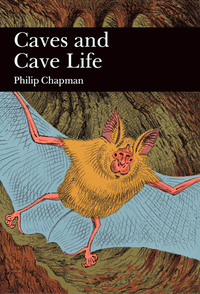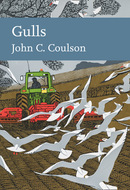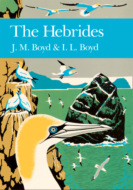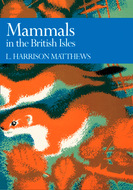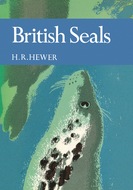Kitab fayl olaraq yüklənə bilməz, yalnız mobil tətbiq və ya onlayn olaraq veb saytımızda oxuna bilər.
Kitabı oxu: «Caves and Cave Life»
The New Naturalist Library
A SURVEY OF BRITISH NATURAL HISTORY
CAVES AND CAVE LIFE
Editors
Max Walters, ScD, VMH
Professor Richard West, ScD, FRS
David Streeter, FIBiol
Sarah A. Corbet
Derek Ratcliffe
The aim of this series is to interest the general reader in the wildlife of Britain by recapturing the enquiring spirit of the old naturalists. The editors believe that the natural pride of the British public in the native flora and fauna, to which must be added concern for their conservation, is best fostered by maintaining a high standard of accuracy combined with clarity of exposition in presenting the results of modern scientific research.

A cave spider Porhomma convexum stalks across the floor of GB Cave on Mendip. Above it, a fungus gnat Speolepta leptogaster hangs in a spreading fungal mycelium. (Philip Chapman)

Copyright
William Collins
An imprint of HarperCollinsPublishers Ltd 1 London Bridge Street London SE1 9GF WilliamCollinsBooks.com
This eBook edition published by William Collins in 2018
© Philip Chapman Philip Chapman asserts his moral rights to be identified as the author of this work
A catalogue record for this book is available from the British Library.
All rights reserved under International and Pan-American Copyright Conventions. By payment of the required fees, you have been granted the non-exclusive, non-transferable right to access and read the text of this eBook on-screen. No part of this text may be reproduced, transmitted, downloaded, decompiled, reverse engineered, or stored in or introduced into any information storage and retrieval system, in any form or by any means, whether electronic or mechanical, now known or hereinafter invented, without the express written permission of HarperCollins Publishers.
HarperCollinsPublishers has made every reasonable effort to ensure that any picture content and written content in this ebook has been included or removed in accordance with the contractual and technological constraints in operation at the time of publication.
Source ISBN 9780007308545
Ebook Edition © JANUARY 2019 ISBN: 9780007403974
Version: 2019-01-09
Dedication
Dedicated to the memory of
Dr G.T. ‘Jeff’ Jefferson
a dear colleague and friend
Contents
Cover
Title Page
Copyright
Dedication
Editors’ Preface
1. The Fascination of Caves
The lure of caves
The sporting science
Underground naturalists
2. The Cave Habitat
What is a cave?
What lives in caves?
Caves in Limestone
Types of cave habitat
Food supply
Microclimate
3. Limestone Caves in Britain and Ireland
Karst: the landscape of caves
Caves in Britain and Ireland
Mendip
Pennines
South Wales
Derbyshire’s Peak District
Sligo-Fermanagh
Clare
Other areas
4. Cave Fauna and Flora
The origin and classification of cavernicoles
Life on the threshold
A place of shelter
Waifs and strays
Denizens of darkness
Submariners
5. Cave Communities
The wall association
Terrestrial mud bank community
‘Batellites’
Pool surface associations
Freshwater stream communities
6. Caves Through the Pleistocene
The age of ice
Pleistocene survivors and recent colonists
Troglodytes
7. The Future of Caves
Cave conservation and the caver
External threats to caves, groundwater pollution and public safety
Impact of human activity on cave faunas
Conservation of cave-roosting bats
Limestone quarrying
Acid rain, caves and flue gas desulphurization
Cave SSSIs
Databases
Glossary
Bibliography
Index
Acknowledgements
About the Publisher
Editors’ Preface
To man, caves are the original shelters, sought since Palaeolithic times hundreds of thousands of years ago. To the adventurous amongst us, they are challenges to be explored, dark passages leading to unknown underground palaces and waterways, sometimes of amazing beauty. To the naturalists amongst us, they arouse our interest by their curious and unique life-forms, selected by the restrictive environments, and by their presence in areas of limestone country of outstanding beauty. Yet, as with other life, the plant and animal communities of caves form a cohesive and interacting collection of organisms, from bacteria to mammals, from lower to higher plants, depending on the varied local environments within the cave systems.
Here, then, is an ideal subject for the New Naturalist, taking into account not only the living natural history of caves, but also their origin, habitat characteristics, and what they tell us of past times. Indeed, as well as their living content of caves, the sediments within them are often the graveyard of past denizens of caves, such as the hyaena, as well as the prey of cave carnivores; and, of course, these sediments reveal past habitation by man through the present of bones and tools. So we have a fourth dimension of time to add to the natural history of caves.
It may be thought that cave communities would be one of the few remaining natural ecosystems surviving in the British Isles, protected by difficulty of access. As with other living communities more apparent and better known to us, this is not the case; they are perhaps more fragile than above ground communities, more easily disturbed and affected by man’s activities. To the natural historian the subject of caves demands a broad multidisciplinary approach. Dr Chapman has extensive experience of the many aspects of cave natural history. He has been able to integrate this variety, dealing with the essential geological and geomorphological background, the historical theme, and the natural history of caves, so presenting the naturalist with an outstanding and cohesive account of a unique and extraordinary ecosystem of wide interest.
1
The Fascination of Caves
The lure of caves
There is a curious fascination about caves that seems to affect people of all ages and all cultures. Even as children, we have a kind of longing for caves, seeing them perhaps as a place of safety, but equally as a source of adventure and excitement – a gateway to the unknown.
Our remote ancestors used the entrances of caves as habitations, but reserved their depths as hiding places for their most precious and powerful secrets – the painted, magical symbols which would ensure a continuing supply of game for hunting, and the earthly remains of their dead. Religion was born in caves, and even now the buildings of our Christian cultures retain atavisms of those earlier forms of worship; under the central part of the church lies the crypt, secret and dark – originally the burial place of saints and martyrs. It is perhaps also significant that the Mother of God should have appeared to Bernadette in a grotto at Lourdes, and should have consecrated the cave spring which welled up from underground.
In Japanese mythology the sun-goddess Amaterasu retreated at night to a cave, plunging the world into darkness. The ancient Greeks too gave prominence to caves in their mythology. Zeus, chief of Gods, was born in a cave, and of course the Greek hell lay below ground, and at its gates Charon the ferryman waited in his boat to row the souls of the departed across the black waters of the River Styx into a land of grief and eternal pain. In our own mythology, King Arthur, his knights and hounds are said to slumber still beneath a Welsh mountain, eternally awaiting the call to battle. Even today in parts of New Guinea, tribesmen will say that their ancestors were born directly from the earth through the womb-like opening of a cave.
With such a long cultural association between the darkness of caves, their chill and smell of decay, and the nameless terrors of the grave, it is not surprising that our ancestors should have equated caves with what they knew of volcanic vents and imagined the fires of hell in their depths. Dante’s Inferno is just one manifestation of an older oral tradition in Europe which told of animals, usually a dog or a goose, entering a cave to emerge days later from another miles away, devoid of fur or feathers and showing signs of singeing by infernal flames.
Lurid accounts of real caves are frequent in ancient literature. The Roman philosopher Seneca reported that a party of Greek silver prospectors who ventured underground had encountered:
“huge rushing rivers, vast still lakes, and spectacles fit to make them shake with horror. The land hung above their heads and the winds whistled hollowly in the shadows. In the depths, the frightful rivers led nowhere into the perpetual and alien night.”
Seneca adds that after their return to the surface, the miners “lived in fear for having tempted the fires of Hell.”

Fig. 1.1 Manner of crossing the first river in Peak Cavern, engraved by Cruikshank in 1797, from G.M. Woodward’s Eccentric excursions … in different parts of England & South Wales, pub. Allen & Co., London, 1801. (Courtesy of Trevor Shaw)
Perhaps the oldest written reference to a cave appears in a book about mountains written before 221 B.C. in China – a country where caves have been systematically explored and exploited over many centuries as water supplies and as sources of nitrates for fertilizer and for making gunpowder. The earliest surviving reference to a cave in Britain dates from around 200 A.D. in the writings of Titus Flavius Clemens, known as Clement of Alexandria. He writes:
“Such as have composed histories concerning the Britannic islands tell of a cavern beneath a mountain, and at the summit of it a cleft, and of how from the wind rushing into this cavern and reverberating from its hollows, an echo as of many cymbals is heard.”
Which cave this refers to is uncertain, but a location in either the Mendip Hills or Derbyshire would seem most likely since both areas were well-known as important centres of lead mining during this period. Current opinion favours the Great Cave of Wookey Hole which would undoubtedly have been known in Roman Britain and where, according to Balch (1929), a noise like the clash of cymbals can occasionally be heard.
Irish caves were also documented from the earliest times. The Annals of the Four Masters, written in 928 A.D., record the massacre of 1000 people in Dunmore Cave in County Kilkenny and if the abundant remains excavated there are anything to go by, the account may well be true.
The myth of the ‘howling cave’ resurfaces with Henry of Huntingdon in his mediaeval Historia Anglorum, written in Latin around 1135. He gives pride of place among the four “wonders of England” to a cave “from which the winds issue with great violence”. This one appears to have been situated in the Peak District and may have been Peak Cavern, since some time later Gervase of Tilbury, writing about this cave around 1211, states that strong winds sometimes blow out of it. The third of Huntingdon’s four wonders was also a cave, this time one situated at:
“Chederole where there is a cavity under the earth which many have often entered and where, although they have traversed great expanses of earth and rivers, they could never come to the end.”
This poses modern scholars with an interesting puzzle, for although there is indeed a well-known cave at Cheddar (open to the public as ‘Gough’s Cave’), it is short, easily explored and does not connect with the underground river known to flow beneath it. However, in 1985, cave divers Rob Harper and Richard Stevenson squeezed down a narrow pit in a forgotten corner of Gough’s Cave and emerged underwater into the main river, which they followed upstream to reach a large dry cavern, dubbed the Bishop’s Palace. The flooded system lies close to the water table, and the divers surmise that before the Cheddar rising was enclosed by a dam, the water level may have been low enough to permit entry into the now-flooded cave. On the other hand, the village of Cheddar (once known as ‘Cheddrehola’) is only some ten kilometres away from Wookey Hole, and Huntingdon may well have confused the two localities.
The surprising thing is not the doubts about the accuracy of Henry of Huntingdon’s accounts, but that he should have chosen caves for two of his four ‘wonders of England’. Other mediaeval chroniclers also mention caves and mostly follow Huntingdon’s accounts closely, as also do the various manuscript ‘Wonders of Britain’ or ‘Mirabilia’ which appeared between the 13th and 15th centuries.
In the 16th and early 17th centuries writers such as Leland, Camden, Drayton and Leigh, gripped by the Elizabethan romantic passion for ‘discovering the countryside’, penned lurid accounts of the caves they visited and of the legends and folklore attached to them. One looked forward to a planned visit to Wookey Hole with not a little trepidation:
“though we entered in frolicksome and merry, yet we might return out of it Sad and Pensive, and never more be seen to Laugh whilst we lived in the world.”
The early 17th century saw the rise of a craze for so-called ‘rogue books’ – sensationalized accounts of swashbuckling anti-heroes such as highwaymen and pirates, and some of these make reference to dastardly goings-on in the caves of Derbyshire. Sam Ridd’s The Art of Juggling (1612) portrayed Peak Cavern as a notorious centre of knavery, and Ben Jonson makes several allusions to this cave (under a different name) and its association with beggars and vagabonds in The Devil is an Ass (1616) and The Gipsies Metamorphosed (1621).
Later in the 17th century the Peak District and its caves continued to attract attention through the writings of Charles Cotton, best known for his collaboration with Izaak Walton on later editions of The Compleat Angler. Cotton’s fondness for caves may be not altogether unconnected with his habit of using them as a sanctuary when hiding from his creditors.

Fig. 1.2 An imaginary ‘straightened out’ view of Peak cavern. In the foreground are the rope-makers’ cottages. From a copper engraving titled The Devil’s Arse, near Castleton, in Derbyshire which appeared in Charles Leigh The natural history of Lancashire, Cheshire and the Peak in Derbyshire, pub. Oxford, 1700. (Courtesy of Trevor Shaw)
Daniel Defoe, the great traveller and polemicist, seems to have completely failed to appreciate the ‘Wonders of the Peak’ which so enthused his contemporaries. Dubbing them the ‘wonderless wonders’, he selects Peak Cavern for a particularly scornful treatment:
“… where we come to the so famed Wonder call’d, saving our good Manners, The Devil’s A--e in the Peak; Now not withstanding the grossness of the Name given it, and that there is nothing of similitude or coherence either in Form and Figure, or any other thing between the thing signified and the thing signifying; yet we must search narrowly for any thing in it to make a Wonder, or even any thing so strange, or odd, or vulgar, as the Name would seem to import.”
This seems a bit harsh, as the entrance to Peak Cavern is, I would have thought, impressive by any standards. On the other hand, Defoe goes right over the top in his reaction to nearby Eldon Hole: “this pothole is about a mile deep … and … goes directly down perpendicular into the Earth, and perhaps to the Center”. It is actually 75 m deep.
Although Defoe’s Tour was not intended to be a guide book, a series of revisions by various editors up to 1778 made it ever more like one; even going to the lengths of adding in descriptions of caves not included in the original version. The success of the Tour and the rise of the ‘picturesque’ movement in art and architecture (epitomized by the romantic landscape designs of Humphrey Repton) no doubt encouraged the early 19th century vogue of ‘curious travellers’ who sought out and explored previously neglected corners of the countryside in order to write about their experience. Where previously the ideal landscape had been one which showed the civilizing hand of man in formal gardens and straight avenues of trees, ‘wild nature’ now became fashionable. Any accessible landscape featuring dramatic cliffs and wooded gorges, crumbling ruins and, of course, caves, became a tourist attraction. A swelling tide of visitors headed for the fashionable delights of the Peak and Wookey Hole, the scars and potholes of the Yorkshire Dales, the seacaves of Scotland and Kent’s Cavern at Torquay. Even the great Dr Samuel Johnson seems to have been caught up with enthusiasm for a sea cave he visited on Skye during his tour of the Hebrides in 1773.
The descriptions by the ‘curious travellers’ generally aimed to convey emotions of awe, wonder or terror at the beauty and power of ‘wild nature’. Caves lent themselves particularly well to the Gothic imaginations of young romantic writers like Benjamin Malkin, who described a visit to the entrance of Porthyr-Ogof in his The Scenery, Antiquities, and Biography of South Wales (1807):

Fig. 1.3 Fingal’s Cave from a hand-coloured wood engraving by Whimper, in Anon: Natural Phenomena, pub. London, SPCK, 1849. (Courtesy of Trevor Shaw)
“We penetrated about an hundred yards, as far as any glimmering of daylight from the mouth directed us: and this specimen of Stygian horror was amply sufficient to satisfy all rational curiosity. The passage over uneven rocks, with scarcely a guiding light, and in many places with a bottomless gulph directly under on the left, in a misty atmosphere from the vapour of the place and the exhaustion of a laborious walk, was not to be pleasurably continued for any length of time or distance. … Any person who will enter this cavern … may form a just idea … of the classical Avernus and poetical descent into the infernal regions.”
The north-country clergyman John Hutton stands out among the ‘curious travellers’ as someone who developed a genuine interest in caves. His A Tour to the Caves in the environs of Ingleborough and Settle (in various editions from 1780 onwards) contained descriptions of some two dozen caves and potholes and was the first book in Britain, and one of the first in the world, whose main purpose was to describe the natural history of caves. In spite of his liberal use of Gothic adjectives such as “horrid”, “dreadful” and “terrible”, a real enthusiasm for his subject comes through, and in the two later editions of his book he added a section entitled “conclusions of a philosophic nature”, in which he discusses limestone geology, cavern formation and hydrology. Some of his views, particularly those on the springs and underground streams of the area, were farsighted, although others seem laughably quaint in the light of modern science. It is interesting for the modern reader to note the touchstone against which he measured his own ideas:
“I think I may say without presumption, that my theory is conformable to events as related by Moses; and my reasoning agreeable to the philosophical principles of Sir Isaac Newton, where they could be introduced.”
The early 19th century boom in natural science, when it spread to caves, focussed initially on two fields of research which Hutton had completely overlooked – namely palaeontology and archaeology. Deposits of bones had been known from caves in mainland Europe at least as far back as the 16th century, when speculation about their nature had inclined, as might be expected, to the fantastic. Some were considered to be dragon bones, while others – the sub-fossil tusks of elephants or mammoths, known as ‘unicorn horn’ – were greatly prized for their reputed medicinal properties. Quite an industry sprang up around such deposits, and their discoverers or the owners of the caves could become rich on the proceeds.
The Victorian naturalists were the first to appreciate the antiquity of cave bone deposits and their value as a geological record of Britain’s past. The best known of the early cave excavators was Dean Buckland, who plundered cave deposits throughout the country in the 1820s. In the interpretation of his results he was limited by the thinking of his day, but he recognized that many of the bones were from animals no longer present in Britain, and in some cases from animals that no longer existed at all. He was the first to suggest that the explanation for the accumulation of fossil bones in some caves might be that in the distant past hyaenas had used the caves as dens and dragged the carcasses of animals into them. Buckland also made the first find of an Old Stone Age human burial, the ‘Red Lady of Paviland’ found in Goat Hole on the Gower coast, so-called because her body had been anointed with ochre before burial.

Fig. 1.4 Gough’s Cave digging in early 1935, first published in Bristol Evening World, 1 Feb 1935. (Trevor Shaw collection, courtesy of Cheddar Caves Ltd.)
In the 1830s, Schmerling recognized that the remains of humans and of extinct mammals found together in the same deposits in Belgium were of the same age. It was not, however, until later in the century, that the work of William Pengelly and Boyd Dawkins and their colleagues established that these remains dated back thousands of years to the Ice Ages of the Pleistocene era, when cave-dwelling people shared our familiar countryside with a fearsome array of giant animals, including cave bears, hyaenas, woolly mammoth, bison, aurochs and woolly rhinoceros. Excavation in caves has, of course, continued to the present day, and cave sites worldwide have now yielded material which has helped to shape our understanding of human evolution and the birth of our culture.
The sporting science
The systematic exploration, documentation and commercial exploitation of caves was already underway in China many centuries before miners and natural historians first began to measure and record details of our European cave systems in a scientific way. One of the first of this breed of explorers in Britain was John Beaumont, a 17th century Somerset surgeon and an amateur student of mining and geology. When in 1674 lead miners excavating a shaft in the Mendip Hills accidentally breached a natural underground chamber, Beaumont hastened to the site and hired six miners to accompany him into the cave. Carrying candles, the company descended the 18 m shaft to the first chamber, which Beaumont proceeded to measure: it was 73 m long, two metres wide and nine metres high. “The floor of it is full of loose rocks,” wrote Beaumont in his subsequent report to the Royal Society, “its roof is firmly vaulted with limestone rocks, having flowers of all colours hanging from them which present a most beautiful object to the eye.” The intrepid surgeon then led a 100 m crawl through a further low passage which opened into the side of a second chamber, so vast, Beaumont reported, that “by the light of our candles we could not fully discern the roof, floor, nor sides of it.” The miners, accustomed as they were to the underground, could not be persuaded to enter this chasm, even for double pay. So Beaumont went down himself:

Fig. 1.5 Interior Chamber of Cox’s Stalactite Cavern, Cheddar, Somersetshire. Lithograph by Newman & Co. London; pub. S. Cox, Cheddar about 1850. (Courtesy of Trevor Shaw)
“I fastened a cord about me, and ordered them to let me down gently. But being down about two fathom I found the rocks to bear away, so that I could touch nothing to guide myself by, and the rope began to turn round very fast, whereupon I ordered the miners to let me down as quick as they could.”
He landed dizzy but safe 21 m below, on the floor of a cavern 35 m in diameter and nearly 37 m high within which he found large veins of lead ore. Surprisingly, Beaumont’s account failed to stimulate much curiosity about caves in scientific circles, and after a brief flurry of lead mining, the cave, known as Lamb Leer, was abandoned; its entrance shaft eventually collapsed and the sealed-off chamber was virtually forgotten for two centuries.
The rediscovery of Beaumont’s long-lost Lamb Leer cave took place in 1879, the same year that a young French law student, Edouard-Alfred Martel, made his first visit to the famous Adelsberg Cave in Slovenia (which was then part of Austria, but since World War II has reverted to its local name of Postojna Jama). Martel was completely enthralled, and in 1883 began to devote all his vacation time to cave explorations in the Causses of southwestern France. What set him apart from previous cave explorers, was his meticulous preparations and his systematic recording of all aspects of the caves he explored, combined with a tremendous physical ability and courage. His speciality was deep vertical pits, and in 1889 he successfully negotiated the 213 m vertical entrance shaft of the Rabanel pothole north-west of Marseilles – an outstanding feat given the equipment then available.
To calculate a pit’s depth, he would read the barometric pressure at the bottom and compare it with the surface pressure. He measured the horizontal dimensions of each newly-discovered chamber with a metal tape, drawing a sketch of the cave as he worked. Roof heights were calculated with an ingenious contraption: after attaching a silk thread to a small paper balloon, he would suspend an alcohol-soaked sponge beneath it, light the sponge, and measure off the length of thread carried aloft by the miniature hot-air balloon. Martel also habitually recorded subterranean air and water temperatures, finding variations with depth and season, and amassed whole volumes about cave geology, hydrology, meteorology and flora and fauna. But perhaps his greatest contribution to cave science was his research on how subterranean water circulates – a study prompted by his own bout with ptomaine poisoning, contracted from drinking spring water in 1891. After recovering from the illness, he traced the spring’s source using fluorescein dye introduced to nearby sink holes. Descending the appropriate pit, he found the putrefying carcass of a dead calf that had contaminated the spring with what he wryly termed “veal bouillon”. Further study allowed him to distinguish between “true springs”, fed by diffuse circulation of rainwater, cleaned and filtered by its passage through soil and rocks, and “false springs” fed by a rapid flow from sinkholes via cave passages too large to filter out impurities. Martel’s subsequent campaigning for stricter control of sources of drinking water eventually led to a dramatic reduction in deaths from typhoid and won him a gold medal from the French Government.
In 1895 Martel founded the French ‘Société de Spéléologie’, arguing that ‘speleology’, which had been previously considered a sport or a singular eccentricity, should be recognized as a fully-fledged science – “a subdivision of physical geography, like limnology for lakes and oceanography for seas.” A prolific author, he edited Spelunca, his Society’s bulletin, and wrote books about his own cave discoveries. In 1907 the French Academy of Sciences awarded him the grand prize for physical sciences, and in 1928 he was elected president of the Geographical Society of Paris. By the time he died in 1938, aged 78, the grand old man of speleology had personally probed nearly 1500 caves, hundreds of which had never been entered before; his technical innovations had become standard equipment for other cavers; and above all, his persistence and dedication had created a framework within which the seedling science of speleology could develop and blossom.
Meanwhile, the systematic documentation of caves had also started in Britain, with the formation of the Yorkshire Ramblers’ Club in 1892. Under the influence of S.W. Cuttriss, dubbed ‘the scientist’ for his assiduity in recording the group’s findings, its members drew up surveys of the caves they explored, and kept notes of temperatures, altitudes and geographical features.
The great exploration challenge of the day was the awesome Gaping Gill, a pothole high on the slopes of Ingleborough Hill which had been plumbed to a depth of 110 m, but had never been descended. The main obstacle to its exploration came from Fell Beck, an icy stream which cascades down the entrance, filling it with spray and extinguishing any flame which might light a caver’s descent, as well as half-drowning him. A local man, John Birkbeck, had made two heroic, but unsuccessful attempts to descend the pit in the 1840s, after digging a trench to divert the Fell Beck to another sink. His first try nearly proved fatal, when strands of his rope were severed on a rock ledge, but on his second attempt he reached a ledge at 58 m which now bears his name. Yorkshire Ramblers’ member Edward Calvert took up the challenge and had almost completed his own preparations for a descent on rope ladders in 1895, when Martel arrived on the scene, hot-foot from London where he had been invited to address an International Geographical Congress on cave-hunting methods.
